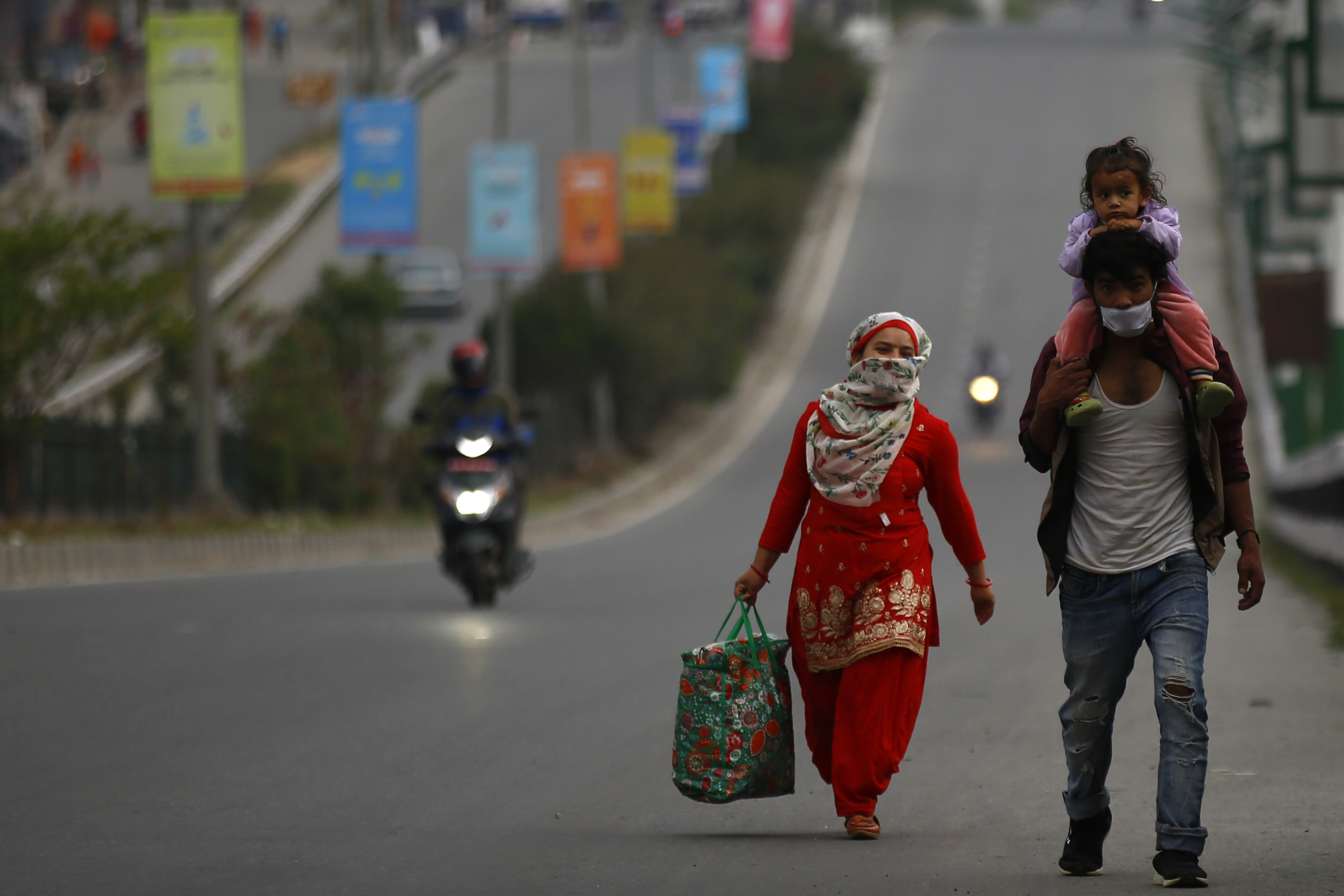General refrain: Ramp up tests, identify red, orange, green zones, ease lockdown
Areas where only a few cases were detected in the past and have not reported new cases should be categorised as orange zones. Areas with no COVID-19 cases should be categorised as green zones
Kathmandu, April 27
The prolonged nationwide coronavirus lockdown has started causing widespread unease among Nepalis with many saying the government must start taking incremental steps to create an environment for people to work and earn a living.
The call comes a day after the government extended the lockdown for the fourth time till May 7 to prevent the spread of COVID-19.
Since the government imposed the lockdown on March 24, it has ramped up tests to trace potential coronavirus patients. Yet many say these tests are not adequate and the government may not have been able to trace many asymptomatic coronavirus carriers.
Nepal has so far conducted 53,534 coronavirus tests, of which 80 per cent are rapid diagnostic tests. As tests are going up, the number of infected people has also jumped to 52, of whom 16 have recovered. Of the active cases, more than half are from Udayapur district in the east, meaning many parts of the country, such as Kathmandu and Pokhara, are now safe.
“It is high time the government categorised areas based on the number of cases,” said Baburam Marasini, former director at the Epidemiology and Disease Control Division under the Department of Health Services. Hotspots, according to him, should be declared red zones.
“Areas where only a few cases were detected in the past and have not reported new cases should be categorised as orange zones. Areas with no COVID-19 cases should be categorised as green zones,” he added.
India has adopted a similar model, and on Saturday it slightly eased the lockdown, allowing small neighbourhood convenience stores in safe areas to restart operation. Nepal should do the same to provide relief to cash-strapped people and small businesses, experts say.
“The government can let shops reopen in safe areas. But people should be taught to maintain physical distance and hygiene. After all, we also need to look into economic aspects,” said Marasini, urging the government to come up with “strategic plans” to ease the lockdown.
The lockdown was supposed to break the chain of infection, which is crucial for countries such as Nepal and India with fragile healthcare systems. But the lockdown was also supposed to provide time for governments to strengthen their health system, which, unfortunately, has not happened in Nepal. Frontline health workers here are still complaining about shortage of personal protective equipment, while hospitals have not been equipped with adequate number of ventilators, which are crucial to save lives if the health condition of coronavirus patients deteriorates. Worse, only one in every 500 people has undergone coronavirus tests at present.
Against this backdrop, prolonging the lockdown will only make people poorer, say experts.
“Testing should be accelerated. Hotspots should be recognised. And contact tracing of those who have tested positive in rapid diagnostic tests should be immediately done. The government must give priority to detect as many positive cases as possible within the extended duration of lockdown,” said Anup Subidee, consultant infectious diseases physician and public health expert at HAMS Hospital.
The Ministry of Health and Population has been asserting that the lockdown has been effective in preventing the spread of the disease. “So, the lockdown period will depend on number of transmissions,” said Bikash Devkota, spokesperson for the ministry.
Another determinant, according to Devkota, is “human behaviour”.
“People who engage in agricultural activities and those who visit shops or attend gatherings can also transmit the disease. And there has been a rise in the number of cases this month. Therefore, prevention is necessary,” said Devkota.
The government is circumspect. But many wonder what might happen when hordes of Nepalis who have lost jobs in the Gulf, Malaysia and even India return home.
Nepal does not have to worry about this threat for the time being as movement of international flights and people across border crossings has been barred till May 13. But the government cannot always remain risk averse.
“When the lockdown is lifted, people will start travelling. Nepalis living in foreign countries will also return home. It will be difficult for us to handle the situation then,” said Marasini, adding, “It is easier for local governments to handle the situation when fewer people enter their territories. Once the lockdown is over, the situation will not be the same.”
A version of this article appears in e-paper on April 28, 2020 of The Himalayan Times.






